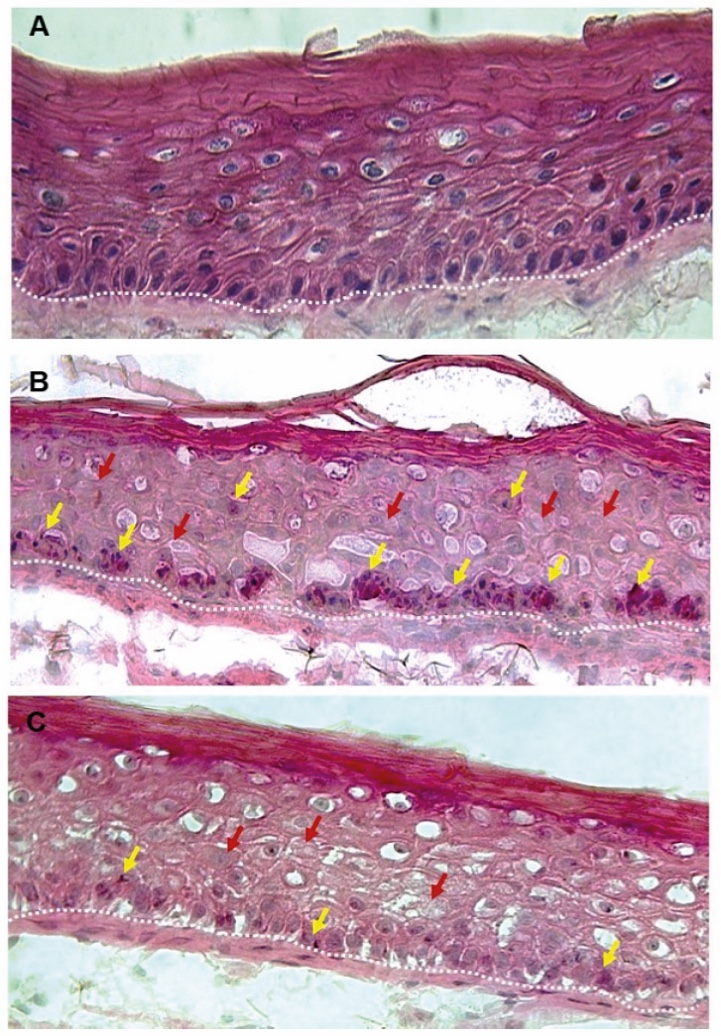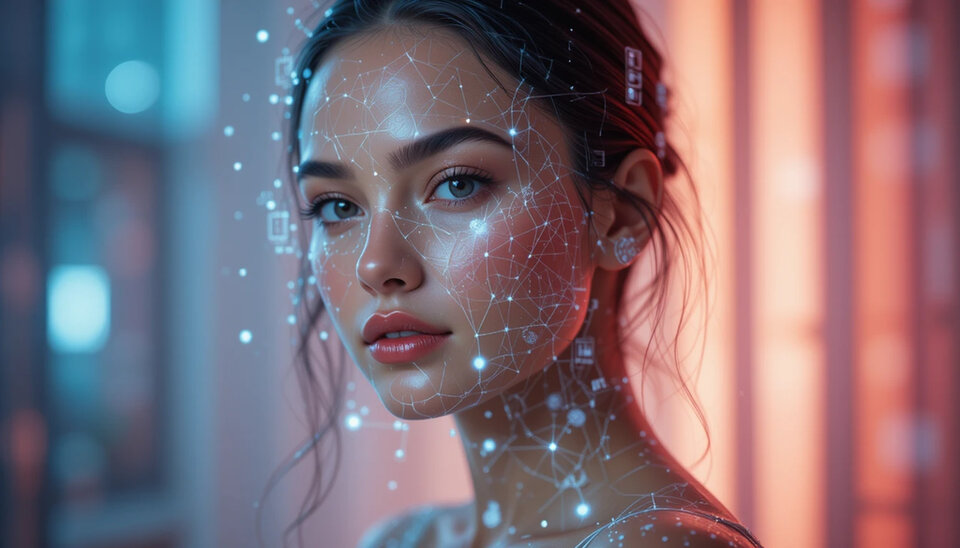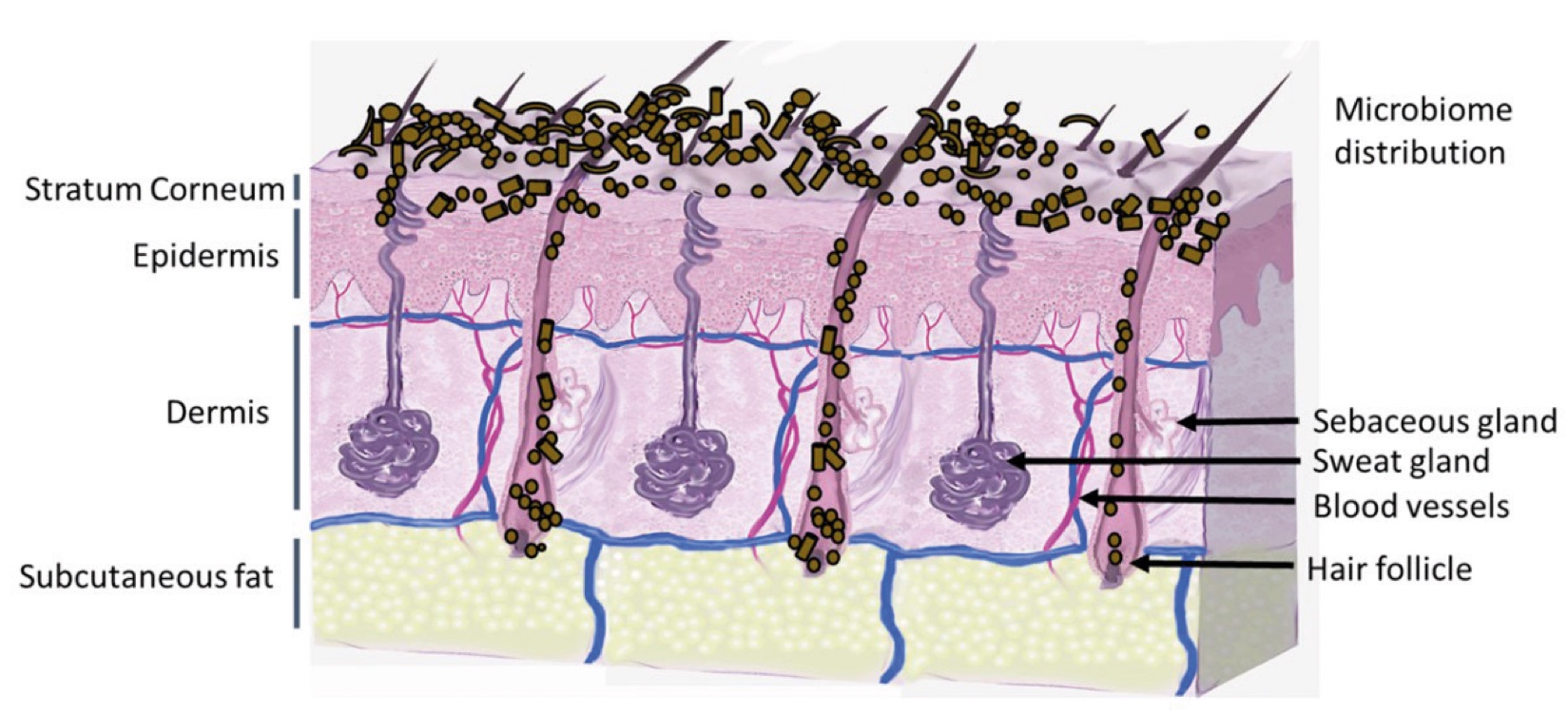
Skin Longevity
Skin care
KEYWORDS
peer-reviewed
Longevity's Groundbreaking AI Revolution: Reinventing Ingredients, Formulas, and Personalized Results
Lisa Heida
Senior Marketing Manager at Covalo, Amsterdam, The Netherlands
ABSTRACT: The beauty industry’s evolving emphasis on longevity (extending skin health and vitality over time) is catalyzing innovation driven by artificial intelligence (AI). This article examines how AI addresses critical challenges in longevity skincare, including navigating complex ingredient libraries, accelerating formulation cycles, and providing data-driven personalization. Applications range from the design of novel peptides to the identification of synergistic ingredient combinations that support long-term skin health. However, AI’s rapid adoption is not without costs: training and deploying large models require significant energy, water, and hardware resources, raising sustainability concerns. Despite these drawbacks, AI holds potential to reduce waste in R&D and enable cleaner formulations, offering a net benefit when deployed responsibly.
??????????????????
“
“A study in healthy women providing probiotic yogurt for four weeks showed an improvement in emotional responses as measured by brain scans”

Figure 1. Skin Section with Microbiome. Most microorganisms live in the superficial layers of the stratum corneum and in the upper parts of the hair follicles. Some reside in the deeper areas of the hair follicles and are beyond the reach of ordinary disinfection procedures. There bacteria are a reservoir for recolonization after the surface bacteria are removed.
Materials and methods
Studies of major depressive disorder have been correlated with reduced Lactobacillus and Bifidobacteria and symptom severity has been correlated to changes in Firmicutes, Actinobacteria, and Bacteriodes. Gut microbiota that contain more butyrate producers have been correlated with improved quality of life (1).
A study in healthy women providing probiotic yogurt for four weeks showed an improvement in emotional responses as measured by brain scans (2). A subsequent study by Mohammadi et al. (3) investigated the impacts of probiotic yogurt and probiotic capsules over 6 weeks and found a significant improvement in depression-anxiety-stress scores in subjects taking the specific strains of probiotics contained in the yogurt or capsules. Other studies with probiotics have indicated improvements in depression scores, anxiety, postpartum depression and mood rating in an elderly population (4-7).
Other studies have indicated a benefit of probiotic supplementation in alleviating symptoms of stress. In particular, researchers have looked at stress in students as they prepared for exams, while also evaluating other health indicators such as flu and cold symptoms (1). In healthy people, there is an indication that probiotic supplementation may help to maintain memory function under conditions of acute stress.
Introduction: The Era of Longevity in Beauty
In the beauty and personal care industry, “longevity” refers to strategies and formulations aimed at prolonging skin health, resilience, and vitality, rather than merely addressing visible aging. What follows is a shift in discourse: consumers no longer seem to connect with phrases such as "turning back time" or "age-defying," which suggest a struggle against a completely natural process. Instead, they are looking for science-backed solutions, often supported by personalized skincare applications. Notably, the personalized skincare segment is expanding, forecasted to grow from USD 26.6 billion in 2025, to USD 47.4 billion by 2034 (CAGR ~8.3%) (1).
While AI is increasingly recognized as a key disruptor – accelerating ingredient discovery, formulation optimization, and personalization – its sustainability profile remains complex. Training large-scale AI systems requires significant energy and water resources and contributes to e-waste through rapid hardware turnover. At the same time, AI can reduce inefficiencies in the traditional R&D pipeline, cut material waste, and support cleaner formulations. Understanding both the benefits and trade-offs of AI is therefore essential as the industry moves toward a longevity-focused personalized future.
The Challenge: From Hype to True Personalization
Despite market momentum, longevity skincare faces significant obstacles. One of the most pressing issues lies in the sheer abundance of available ingredients. With thousands of bioactive compounds – including peptides, antioxidants, adaptogens, and microbiome modulators – formulators face an overwhelming task in selecting and validating which molecules truly deliver long-term benefits. The absence of clear comparative data often leads to decisions based more on market trends than on robust evidence. Data-driven platforms such as Covalo already illustrate how digital infrastructures can streamline ingredient sourcing, formulation design, and regulatory compliance. The logical next stage, however, is the integration of advanced AI methodologies.
Another barrier stems from the reliance on traditional formulation processes, which can be slow, costly, and dependent on trial-and-error experimentation. Iterative reformulation cycles delay product launches and increase resource use, while often yielding only marginal improvements. These inefficiencies are compounded by the difficulty of addressing individual differences in skin biology.
Finally, the conventional R&D pipeline struggles to keep pace with the demand for safe, effective, and environmentally responsible longevity solutions. The complexity of modern skincare calls for a shift from traditional empirical methods toward predictive, data-informed approaches. In this context, AI is positioned as an essential enabler; offering the potential to cut through the complexity and guide the industry toward true personalization and efficacy.
AI and Longevity
Artificial Intelligence is transforming the development of longevity-focused skincare by expanding both the scope and precision of ingredient discovery. One of the most compelling examples might be peptide design. AI-driven platforms can model and predict peptide sequences with targeted biological effects. A recent study demonstrated that a natural peptide identified through artificial intelligence showed measurable anti-aging effects across in vitro, ex vivo, and pilot clinical studies. The authors concluded that “this study validates the utility of AI for novel cosmetic ingredient discovery” (2). Such findings underscore the potential of computationally designed peptides to modulate biological processes central to skin longevity. For instance, autophagy and cellular repair are recognized as key mechanisms in maintaining skin homeostasis, and their decline is a hallmark of aging (3). By generating peptides that influence these pathways, AI-supported methods may contribute to extending cellular balance and functional lifespan in skin cells.
Beyond individual actives, AI enables the exploration of synergistic ingredient combinations. Predictive modeling in cosmetic R&D is increasingly used to forecast how multiple actives might interact, including peptides, botanical compounds, and microbiome modulators. As Di Guardo et al. (2025) discuss, AI can help anticipate compatibility, stability, and synergistic behavior among formulator components (4). These advances suggest a path toward more robust and comprehensive longevity strategies grounded in data-driven multi-ingredient design.
Biotechnology firms are also leveraging AI to discover entirely new classes of ingredients. Companies such as Debut employ AI-guided molecular discovery to target hallmarks of aging, from oxidative stress to impaired barrier function (5). These platforms go beyond identification by integrating formulation considerations early in the design process, reducing the likelihood of incompatibility or instability later on. Together, these developments signal a new era in which AI accelerates the transition from theoretical longevity claims to empirically supported solutions.
Creating cleaner, more effective formulas faster
Traditional skincare development is resource-intensive, often requiring multiple cycles of reformulation to balance efficacy, stability, and consumer safety. AI introduces a level of efficiency previously unattainable in this process. By simulating interactions between ingredients, predicting stability outcomes, and modeling consumer responses, AI can dramatically reduce the need for repeated physical prototyping. This not only shortens time-to-market, but also lowers costs and material waste.
Cleaner formulation is another area where AI demonstrates significant value. Increasingly, consumers demand products that deliver performance without relying on controversial or environmentally harmful components. AI tools can analyze vast ingredient databases to identify cleaner, yet equally effective, alternatives. For instance, predictive algorithms can suggest natural emollients or cold-process emulsifiers that align with “clean beauty” standards while maintaining product performance. This is particularly relevant as the clean beauty segment continues to capture market share and consumer trust.
In addition, AI-driven optimization allows for the proactive design of formulations tailored to diverse consumer needs. By integrating skin biomarker data, lifestyle factors, and environmental conditions, AI can recommend formulations with a higher likelihood of delivering meaningful results. This precision-driven approach marks a departure from the one-size-fits-all paradigm and lays the groundwork for a more personalized beauty experience.

The Ethics of AI: Regulations, Safety, and Sustainability
As AI becomes more integrated into beauty innovation, ethical considerations play a critical role in shaping its application. One of the most pressing issues is sustainability. AI offers brands the ability to trace supply chains, identify environmentally responsible sourcing, and select ingredients with lower ecological footprints, without compromising on performance. This proactive filtering supports industry-wide goals of reducing environmental impact.
Safety assessment is another area where AI offers substantial progress. Predictive toxicology models and in silico simulations allow for early detection of potential irritants or allergens, which reduces the reliance on animal testing. By integrating safety data from diverse sources, AI can flag potential risks long before a formulation reaches clinical evaluation. This capability aligns with growing regulatory and societal demands for cruelty-free product development.
Furthermore, regulatory compliance is increasingly complex as global markets enforce varying standards. AI can act as a compliance navigator, ensuring that ingredient selections meet the safety and labeling requirements of multiple jurisdictions simultaneously. This integration of ethics, sustainability, and compliance demonstrates how AI not only enhances product efficacy, but also upholds social responsibility, reinforcing consumer confidence in longevity-focused beauty.
AI offers considerable potential to streamline research, improve efficacy, and drive sustainability goals – yet, it is crucial to recognize that AI systems themselves can impose substantial environmental burdens. Training and operating complex AI models demand large amounts of energy and water, often sourced from data centers cooled with freshwater and powered on grids that still rely significantly on fossil fuels (6, 7). For instance, training GPT-3 emitted hundreds of metric tons of CO2, and required over 700.000 liters of fresh water, which can be compared to several homes’ annual usage (7, 8). Beyond operational consumption, the rapid turnover of specialized materials contributes to e-waste and necessitates mining of rare and often environmentally questionable materials.
Yet, AI’s environmental drawbacks might not tell the full story. When well-integrated, AI can accelerate sustainability, yielding greater efficiencies and deeper insights than traditional methods alone permit. For example, computational modeling can optimize ingredient sourcing, reduce wasted prototypes in formulation, and enable cleaner alternatives to resource-intensive compounds. On a broader scale, experts suggest that while AI may increase energy use in the short term, overtime efficiency gains and improved innovation capacity could help steer industries (including beauty!) toward lower-carbon futures (9, 10). In essence, the challenge lies in ensuring that AI’s deployment is both responsible and transparent, leveraging its benefits in reducing R&D waste and improving product efficacy, while actively mitigating its environmental footprint through energy-efficient infrastructure, transparency in reporting, and adoption of “Green AI” practices (11, 12).
The Future of AI in Beauty: AI as the “Longevity Co-Formulator”
Looking ahead, the potential of AI in skincare extends beyond ingredient discovery and process optimization. The emerging vision positions AI as a real-time collaborator in the laboratory; a “co-formulator” if you will, capable of working alongside human scientists. In this model, AI platforms continuously learn from experimental data, adapting recommendations on ingredient combinations, dosages, and formulation techniques as new evidence emerges. Such interactive capabilities may transform formulation into a dynamic dialogue between human expertise and computational intelligence.
This evolution is not limited to R&D alone. As consumer-facing applications advance, AI could provide ongoing personalization by adjusting formulations based on lifestyle changes, geographic location, or evolving biomarker data. This continuous feedback loop would allow skincare solutions to evolve in parallel with an individual’s unique biological and environmental context.
Platforms such as Covalo illustrate how digital ecosystems can underpin this transformation, offering integrated access to ingredient data, regulatory insights, and market trends. As these tools mature, AI has the potential to become not just an assistant, but a co-creator of the next generation of longevity science. In doing so, it redefines how innovation, personalization, and ethics converge in the beauty industry.
Conclusion
AI is steering longevity-focused beauty in a whole new direction, offering solutions to critical challenges such as complex ingredient landscapes, slow R&D pipelines, and lack of personalization. At the same time, its adoption raises valid concerns about energy use, water consumption, and resource-intensive hardware. These challenges underline the need for responsible and transparent deployment of AI tools, ensuring that their sustainability drawbacks do not outweigh their potential. When integrated thoughtfully, AI can enhance ingredient discovery, reduce formulation waste, and support cleaner, more effective longevity solutions. As the technology matures, AI stands to become an indispensable co-developer in skincare—provided its environmental footprint is actively managed alongside its scientific contributions.
Acknowledgements
The author wishes to thank Beatriz Mouga for her careful proofreading and insightful fact-checking, which contributed greatly to the accuracy and clarity of this article.
Conclusion
The future of cosmetics lies in the continued evolution of holistic approaches which represents a transformative shift in the industry, merging scientific advancements, natural ingredients, and wellness principles. By understanding and embracing the interconnectedness of these elements, the cosmetics industry can cultivate products that not only enhance external beauty but also contribute to the overall well-being of individuals and the planet.
The interplay between beauty from within and topical cosmetics is the key for future products. The integration of biotechnology and green chemistry is revolutionizing cosmetic formulations, offering sustainable and biocompatible alternatives.
Developers can implement blockchain to trace the journey of ingredients from source to product. Nevertheless, the efficacy of the natural products should be scientifically proven. Marketers can communicate transparency as a brand value, and parallelly educate consumers by highlighting how specific ingredients contribute to radiant and healthy skin.
By embracing the synergy between these approaches and leveraging scientific advancements, the cosmetics industry can provide consumers with comprehensive beauty solutions that cater to both internal and external dimensions of beauty.
Surfactant Applications

The application area lends itself particularly well to the use of AI. Active today in this area is the US company Potion AI (6). The company provides AI-powered formulation tools for beauty and personal care R&D. Their offerings include Potion GPT, next generation ingredient and formula databases and AI document processing. Potion’s work could have a significant impact on the entire surfactant value chain, from raw material suppliers to end consumers. By using their GPT technology, they can help target work toward novel surfactant molecules that have optimal properties for specific applications. By using their ingredient and formula databases, they can access and analyze a vast amount of data on surfactant performance, safety, and sustainability. By using their AI document processing, they can extract and organize relevant information from patents, scientific papers, and regulatory documents. These capabilities could enable Potion AI's customers to design and optimize surfactant formulations that are more effective, eco-friendly, and cost-efficient. A particularly interesting application for this type of capability is deformulation.
Deformulation is the process of reverse engineering a product's formulation by identifying and quantifying its ingredients. Deformulation can be used for various purposes, such as quality control, competitive analysis, patent infringement, or product improvement. However, deformulation can be challenging, time-consuming, and costly, as it requires sophisticated analytical techniques, expert knowledge, and access to large databases of ingredients and formulas.
AI can potentially enhance and simplify the deformulation process by using data-driven methods to infer the composition and structure of a product from its properties and performance. For example, AI can use machine learning to learn the relationships between ingredients and their effects on the product's characteristics, such as color, texture, fragrance, stability, or efficacy. AI can also use natural language processing to extract and analyze information from various sources, such as labels, patents, literature, or online reviews, to identify the possible ingredients and their concentrations in a product.

Figure 2. Skin Section with Microbiome. Most microorganisms live in the superficial layers of the stratum corneum and in the upper parts of the hair follicles. Some reside in the deeper areas of the hair follicles and are beyond the reach of ordinary disinfection procedures. There bacteria are a reservoir for recolonization after the surface bacteria are removed.
References and notes
- Adarsh R. Top 10 Cosmetic Industry Trends (2026) | StartUs Insights (Internet). StartUs Insights. 2025. Available from: https://www.startus-insights.com/innovators-guide/cosmetic-industry-trends/
- Zhou L. et al. The anti-ageing effects of a natural peptide discovered by artificial intelligence (Article). International Journal of Cosmetic Science. 2020 (cited 2025 Sep 25). Available from: https://onlinelibrary.wiley.com/doi/abs/10.1111/ics.12635
- Krutmann J. et all. The skin aging exposome (Article). J Dermatol Sci. 2017 (cited 2025 Sep 26). Available from: https://pubmed.ncbi.nlm.nih.gov/27720464/
- Di Guardo A. et al. Artificial Intelligence in Cosmetic Formulation: Predictive Modeling for Safety, Tolerability, and Regulatory Perspectives. Cosmetics. 2025 (cited 2025 Sep 26). Available from: https://www.mdpi.com/2079-9284/12/4/157
- Sullivan D. Skin longevity biotech lands $20m for AI ingredient discovery (Internet). Longevity.Technology - Latest News, Opinions, Analysis and Research. 2025 (cited 2025 Sep 1). Available from: https://longevity.technology/news/skin-longevity-biotech-bags-20m-for-ai-powered-ingredient-discovery/
- Costa I. AI and Sustainability | KAIZENTM Article (Internet). Kaizen.com. 2024. Available from: https://kaizen.com/insights/ai-sustainability-innovation/
- FRANKI T (Internet). AI in the Context of Sustainability. 2025 (cited 2025 Sep 1). Available from: https://www.francescatabor.com/articles/2025/5/5/ai-in-the-context-of-sustainability
- Tije M. AI Environmental Impact: Understanding the Energy and Water Footprints of AI Models - tilburg.ai (Internet). Tilburg.ai. 2024 (cited 2025 Sep 1). Available from: https://tilburg.ai/2024/09/ai-environmental-impact/
- Chris Preist. Letter: Artificial intelligence aids innovators not incumbents. Financial Times (Internet). (Updated 2024 Jun 21; cited 2025 Sept 3). Available from: https://www.ft.com/content/0eff977d-bf8d-4d21-96f6-b2e3da2a956b
- Velinov A. AI and Sustainability: The Double-Edged Sword (Internet). Inaiwetrust.com. In AI We Trust; 2024 (cited 2025 Sep 1). Available from: https://inaiwetrust.com/p/ai-and-sustainability-the-double
- Lebourg G. How can we create a sustainable AI future? (Internet). TechRadar. 2025. Available from: https://www.techradar.com/pro/how-can-we-create-a-sustainable-ai-future
- VERMA D. Artificial Intelligence (AI) has become an integral part of modern society, driving innovations across industries from healthcare and finance to entertainment and transportation. While AI holds the promise of transforming these sectors for the better, its rapid development also raises significant en (Internet). Linkedin.com. 2024. Available from: https://www.linkedin.com/pulse/green-ai-comprehensive-overview-environmental-impact-artificial-s5zxe/
